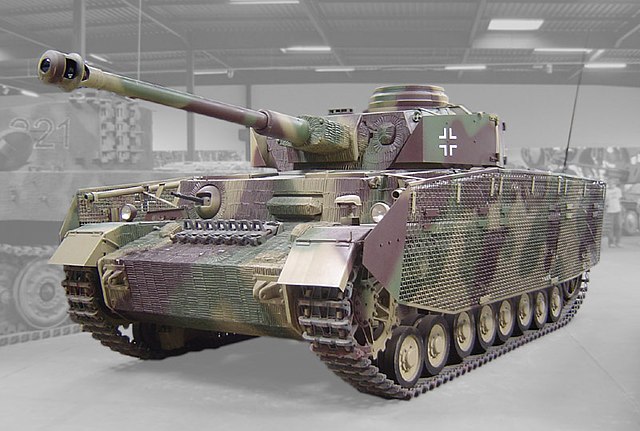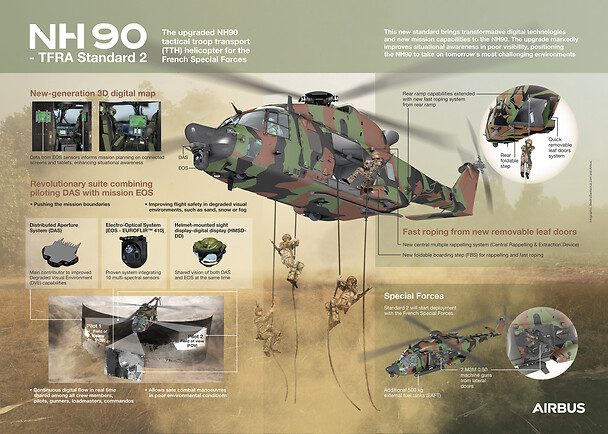
Combat vehicles based on the PzKpfw IV chassis
Only the Sturmgeschütz IV assault guns, recovered from the swamp and repaired at the Land Forces Training Center in Poznań, have survived to this day. It is located in the White Eagle Museum in Skarzysko-Kamen and became available on July 25, 2020.
Quite a few combat vehicles of various types were created on the chassis of the PzKpfw IV tank: self-propelled anti-tank guns, field howitzers, anti-aircraft guns, and even an assault gun. They all fit into the incredible variety of types of combat vehicles created by the Germans during the Second World War, which proves some confusion and a lot of improvisation. The functions of some machines simply doubled, which still causes a lot of controversy - what was the purpose of creating machines with similar combat capabilities, but different types?
Obviously, more vehicles of this type were built in the second half of the war, when the production of PzKpfw IV tanks was gradually reduced, giving way to the PzKpfw V Panther. However, engines, transmissions, chassis and many other items were still produced. There was an extensive network of cooperators who produced a variety of items, from gaskets and gaskets to road wheels, drive and idler wheels, filters, generators, carburetors, tracks, armor plates, wheel axles, fuel lines, gearboxes, clutches and their components. friction discs, bearings, shock absorbers, leaf springs, brake pads, fuel pumps and many different components, most of which can only be used on a certain type of vehicle, but not on any other. Of course, it was possible to switch production, for example to another type of engine, but new bearings, gaskets, components, carburetors, filters, ignition devices, spark plugs, fuel pumps, timing units, valves and many other units had to be ordered. ordered from subcontractors, who would also have to implement new production at home, order other necessary materials and elements from other subcontractors ... All this was done on the basis of signed contracts and contracts, and the conversion of this machine was not so simple. This was one of the reasons why the PzKpfw IV tanks were produced much later than the Pantera, which was supposed to be the next generation of basic combat vehicles.
Both 10,5 cm K gepanzerte Selbstfahrlafette combat vehicles were sent to Panzerjäger Abteilung 521.
At the same time, however, it was possible to produce a large number of PzKpfw IV chassis, which did not need to be completed like tanks, but could be used for the production of various combat vehicles. And vice versa - the increased production of the Panther chassis was almost completely absorbed by the production of tanks, so it was difficult to allocate its chassis for the construction of special vehicles. With SdKfz 173 8,8cm Jagdpanzer V Jagdpanther tank destroyers, this was hardly achieved, of which only 1944 units were produced from January 392 until the end of the war. For the transition vehicle, which was to be the 88 mm SdKfz 164 Hornisse (Nashorn) tank destroyer, 494 units were built. So, as sometimes happens, the temporary solution proved to be more durable than the final solution. By the way, these machines were produced until March 1945. Although most of them were built in 1943, within 15 months they were built in parallel with the Jagdpanthers, which in theory were supposed to replace them. We'll just start with this car.
The hornet turned into a rhinoceros: - SdKfz 164 Hornisse (Nashorn)
The first work on a heavy tank destroyer armed with a 105 mm gun on a PzKpfw IV chassis was ordered from Krupp Gruson back in April of 1939. At that time, the main problem was the fight against the French and British heavy tanks, as the confrontation with the army was approaching with quick steps. The Germans were aware of the French Char B1 tanks and the heavily armored British A11 Matilda I and A12 Matilda II tanks and feared that even more armored designs might appear on the battlefield.
Why was the 105 mm gun chosen and what was it? It was a 10 cm schwere Kanone 18 (10 cm sK 18) field gun with an actual caliber of 105 mm. The gun was to be used to destroy enemy field fortifications with direct fire and heavy combat vehicles. Its development was undertaken in 1926, and two companies entered the competition, the traditional suppliers of artillery for the German army, Krupp and Rheinmetall. In 1930, the Rheinmetall company won, but a tow truck with wheels and two folding tail sections was ordered from Krupp. This machine was equipped with a 105 mm Rheinmetall cannon with a barrel length of 52 calibers (5,46 m) and a total weight of 5625 kg together with the gun. Due to the elevation angle from -0º to +48º, the gun fired at a range of up to 19 km with a projectile mass of 15,4 kg, firing at an initial speed of 835 m/s. Such an initial speed with a significant mass of the projectile gave significant kinetic energy, which in itself ensured the effective destruction of armored vehicles. At a distance of 500 m with a vertical arrangement of armor, it was possible to penetrate 149 mm of armor, at a distance of 1000 m - 133 mm, at a distance of 1500 m - 119 mm and at a distance of 2000 m - 109 mm. mm. Even if we take into account that at a slope of 30 ° these values \uXNUMXb\uXNUMXbare one third lower, they were still impressive compared to the capabilities of the then German anti-tank and tank guns.
Interestingly, although these guns were used on a permanent basis in divisional artillery regiments, in heavy artillery squadrons (one battery per squadron), next to 15 cm Schwere Feldhaubitze 18 (sFH 18) howitzers 150 mm cal. beginning of 1433, compared with the sFH 1944 howitzer, produced until the end of the war, and it was built in the amount of 18. it, however, fired significantly stronger projectiles weighing 6756 kg, with almost three times the explosive force.

